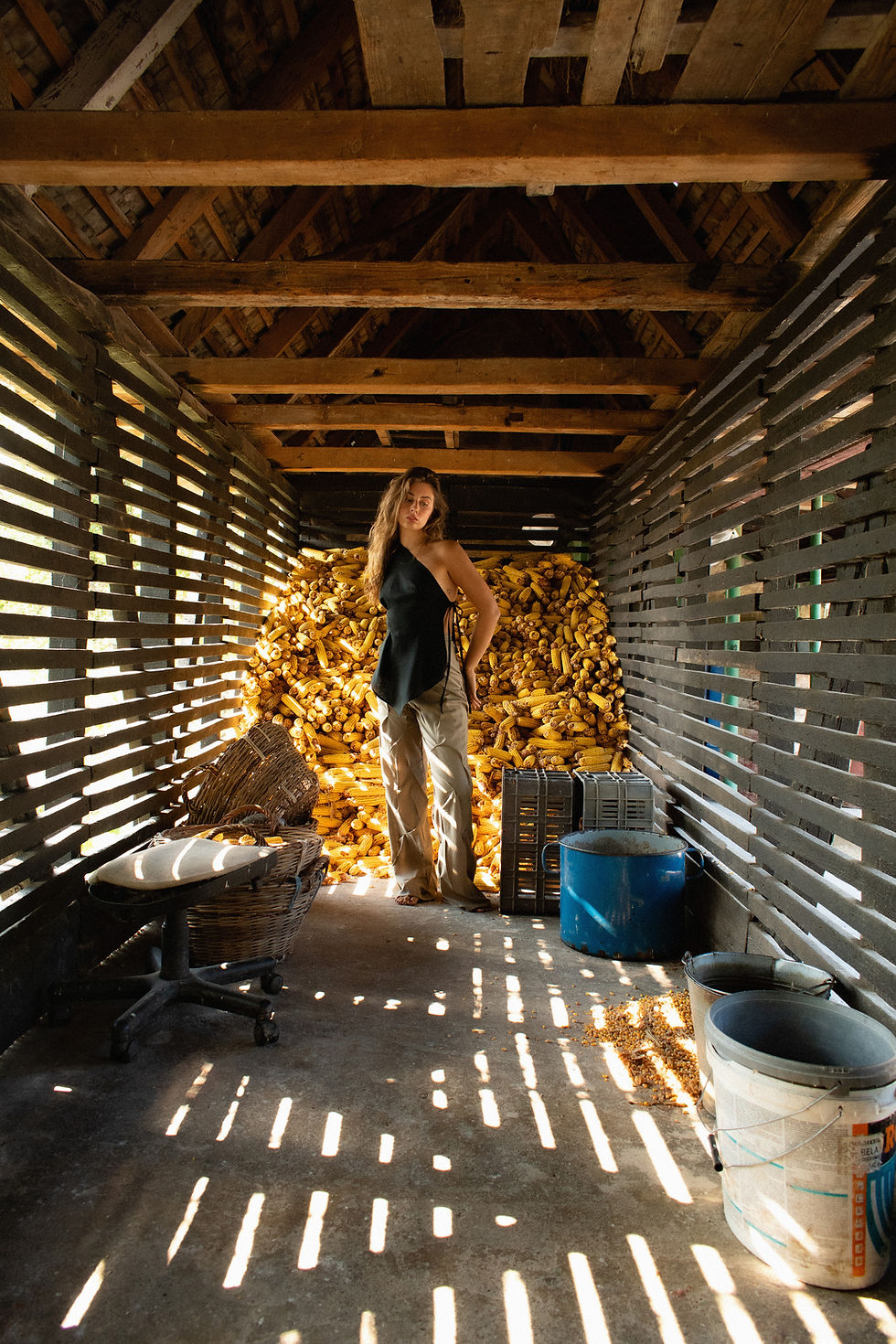Iris Šćekić's Nocturnal Visions
- Savina Ražnatović
- Mar 22
- 3 min read
She captures images in transition, where forms shift and boundaries dissolve. Her compositions exist between moments, blurring distinctions between time, memory, and perception. Rather than depicting a specific place or movement, her work unfolds like a memory surfacing or a dream rearranging itself just before waking. It lingers in an undefined space, drawing the viewer into a world that is both familiar and elusive.
The imagery she constructs is deeply tied to a sense of detachment, yet not emptiness. Predominantly cold-toned landscapes, occasionally accented with warmth, and layered textures contribute to a persistent nocturnal atmosphere, placing her within a tradition of artists who explore liminality and uncertainty. There’s something both immersive and distant about the way she builds these digital compositions. They invite the viewer in but only so far, keeping something hidden at the edges.

Šćekić started in traditional media, using drawing and painting to develop her visual language. As she transitioned to digital art, she discovered a medium that more precisely reflected her vision. Digital tools allowed her to shape light and depth beyond the limitations of physical materials. Unlike the permanence of paint, digital images remain fluid, shifting with every iteration. This approach speaks to a larger question about the role of technology in contemporary art. While photography captures fleeting moments, digital art does the opposite. It constructs images that exist outside time, inherently unstable and ever-changing. Rather than remaining fixed, her images evolve through cycles of revision, reinforcing the idea of impermanence.
Her fascination with dream states and subconscious imagery is central to her work. The moon appears as a recurring motif, symbolizing the unconscious rather than a physical celestial body. Like the unconscious, the moon does not generate its own light but reflects another source. This aligns with Carl Jung’s theory that the conscious self is only a fragment of a deeper, hidden psyche—an idea that resonates with her exploration of what lies beneath perception.
As she explains:
"Dreams and the subconscious are, of course, an endless source of ideas. I am fascinated by the visions we can experience when the mind is not in a controlled state, free from the constraints of time, place, life, and death. It is astounding how real they can feel. This always raises the question: is reality when we are awake, or when we dream? Just as dreams serve as a bridge between the conscious and the unconscious, art plays a similar role—bringing unseen visions to life for others to experience."

Her work doesn’t depict places in the traditional sense; instead, it suggests them, creating environments that hover between presence and absence, between familiarity and estrangement. This places her within a tradition of artists exploring liminal aesthetics, where space is never fully defined and what is absent is just as significant as what is visible. For her, digital art is not just another medium but a way to challenge how images exist in time and perception. Unlike artists who use digital tools to extend traditional methods, she embraces instability, treating images as fluid rather than fixed. Her digital works remain in flux, shifting with each iteration and resisting traditional classifications of painting or photography. They are deliberately unresolved, drawing viewers into a shifting, open-ended experience shaped by perception.
Nothing in her work fully settles. Each composition remains in motion, like a dream that shifts the moment you try to grasp it. There is a quiet refusal to be too legible or too defined. Instead of offering a clear narrative or fixed perspective, she creates space for ambiguity and lingering uncertainty.
This is what makes her work compelling. It doesn’t answer questions. It asks what lies just beyond the frame, in the space between what is remembered and what is imagined.
_________________________________________________________________________________
Iris Šćekić is a Montenegrin artist born in 1996. She completed her primary and secondary education in Bijelo Polje, and in 2017 earned a degree in Fashion Design from the Faculty of Design and Multimedia in Podgorica. That same year, she began studying Painting at the Faculty of Fine Arts in Cetinje, graduating in March 2021 under the mentorship of Professor Ratko Odalović. She has participated in various student and group exhibitions in Montenegro and Serbia, and after her studies, worked on numerous projects as a freelance illustrator for books and films both locally and internationally. Iris currently lives and works in Podgorica, Montenegro.






Comments